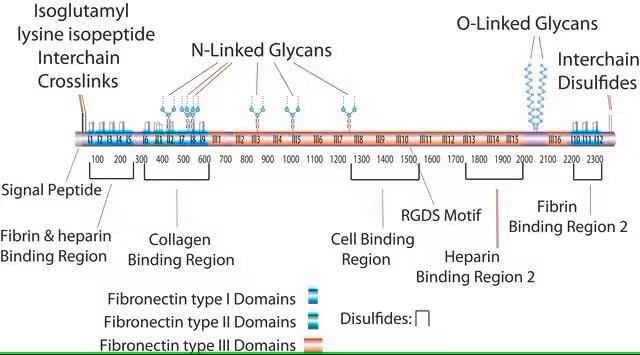F1056
Human Fibronectin
from human plasma, powder, suitable for cell culture
Synonym(s):
Fibronectin
About This Item
Recommended Products
Product Name
Fibronectin human plasma, lyophilized powder, BioReagent, suitable for cell culture, ≥95% (SDS-PAGE)
biological source
human plasma
Quality Level
sterility
sterile
product line
BioReagent
Assay
≥95% (SDS-PAGE)
form
lyophilized powder
packaging
pkg of 1 mg
pkg of 2 mg
pkg of 5 mg
technique(s)
cell culture | mammalian: suitable
surface coverage
1‑5 μg/cm2
solubility
H2O: 1 mg/mL at 37 °C
UniProt accession no.
Binding Specificity
Peptide Source: Collagen
shipped in
dry ice
storage temp.
−20°C
Gene Information
human ... FN1(2335)
Looking for similar products? Visit Product Comparison Guide
General description
Application
- in neural selection medium to coat tissue culture surface for neuronal differentiation
- to coat culture vessels for characterization of iPSC and iPSC‑derived BMEC in 2D cell culture
- to coat culture supports for endothelial cell culture
Biochem/physiol Actions
Caution
Preparation Note
In coating culture surfaces, fibronectin should be diluted in sterile balanced sterile salt solution and coated with minimal volume. Surface should then be air dried for 45 minutes at room temp and can be stored for 2-4 weeks at 2-8°C.
Disclaimer
Storage Class Code
11 - Combustible Solids
WGK
WGK 3
Flash Point(F)
Not applicable
Flash Point(C)
Not applicable
Personal Protective Equipment
Choose from one of the most recent versions:
Already Own This Product?
Find documentation for the products that you have recently purchased in the Document Library.
Customers Also Viewed
Articles
Extracellular matrix proteins such as laminin, collagen, and fibronectin can be used as cell attachment substrates in cell culture.
Protocols
Dilute fibronectin to the desired concentration. Optimum conditions for attachment are dependent on cell type and application. The typical coating concentration is 1 – 5 ug/cm2.Fibronectin coating protocol, products, and FAQs.
Our team of scientists has experience in all areas of research including Life Science, Material Science, Chemical Synthesis, Chromatography, Analytical and many others.
Contact Technical Service





